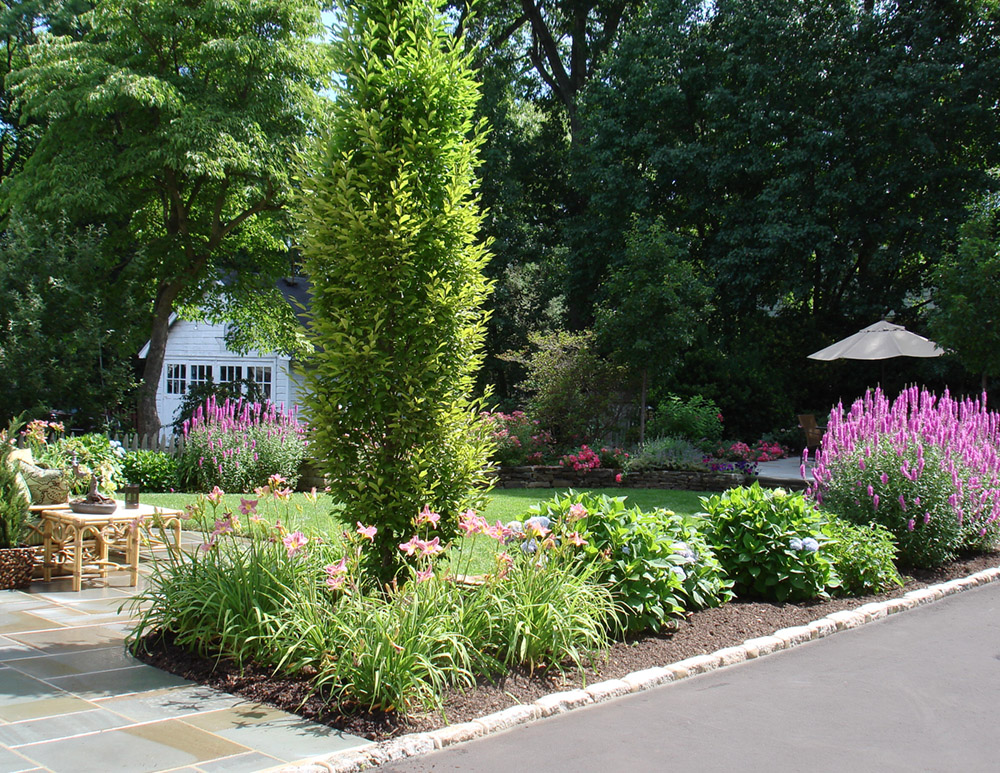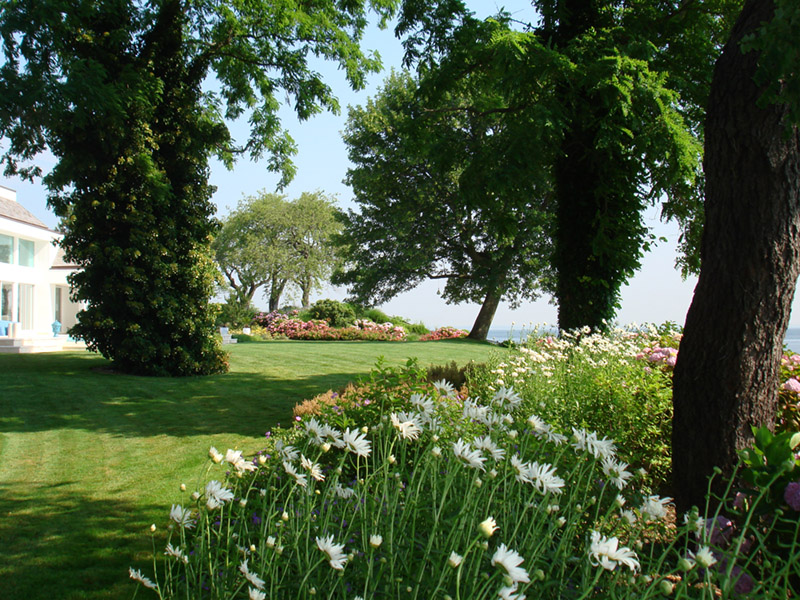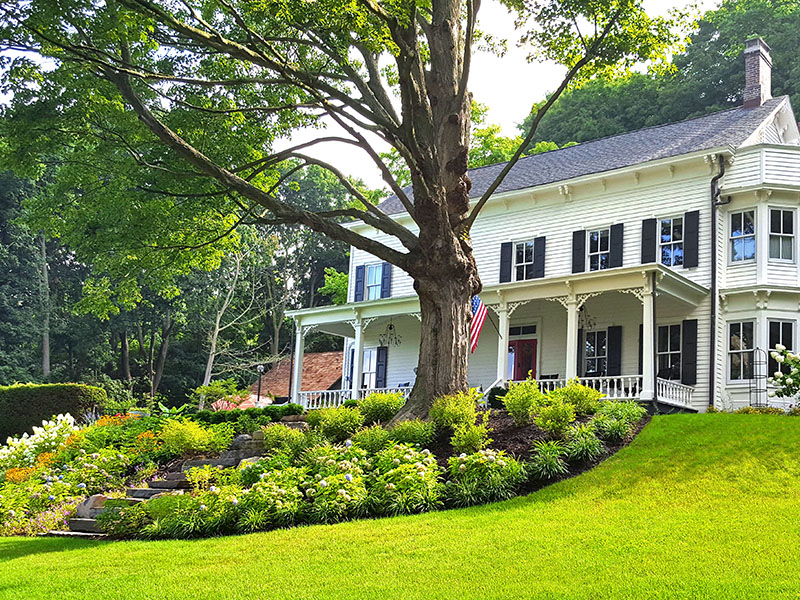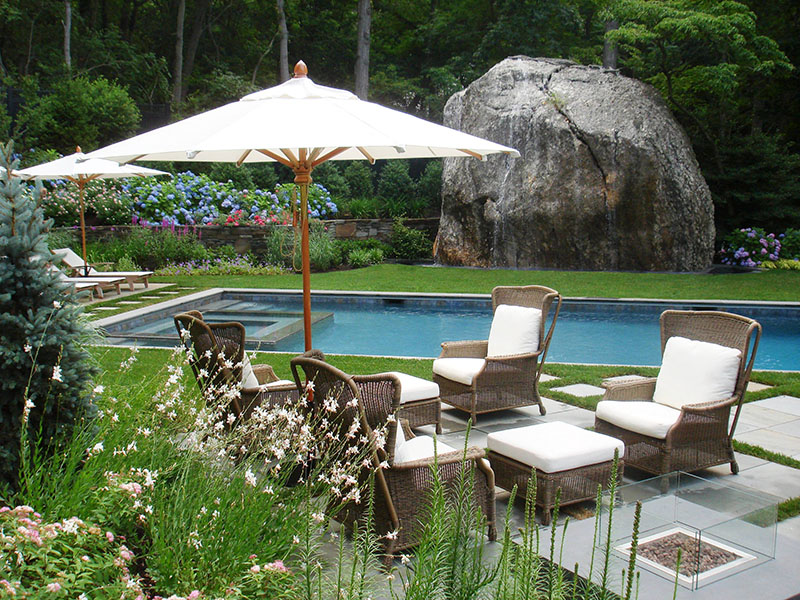Long Island Landscape Design
At Dodds & Eder, we pride ourselves on streamlining the process of crafting beautiful landscape designs for our clients, from concept to creation.
Our highly skilled team of design professionals consult with you to determine what you wish to achieve in terms of vision, function, and scope. Once an initial plan is outlined and an estimated budget presented, an ongoing dialogue ensues, facilitating the fine-tuning of ideas and collaborative development of a finalized blueprint for your custom landscape project.
By working with one company throughout the design-build process—and utilizing our impeccable maintenance services following the project’s ultimate completion—clients have the unique advantage of experiencing a degree of continuity and efficiency seldom seen within the industry.
Our award-winning design staff is well versed in all aspects of your project’s installation, and work in close conjunction with our team of seasoned craftsmen as they hand-select the highest quality materials for your property, then employ expert planting techniques and construction methods to complete the work.
It is this meticulous attention to detail and professionalism that has made Dodds & Eder such a reputable name on the Gold Coast of Long Island—and the one best suited to make your dream landscape a reality.

Beautiful Long Island Landscape Design
Long Island is home to a nearly million-acre patchwork of residential, commercial and municipal properties interwoven with lush green grass, wooded nature preserves and vibrant parkland between sprawling shores. Stretching from Nassau County’s western suburbs to Montauk Point on the East End, and famed Gold Coast up north down to the South Shore, it is a diverse and complex hodgepodge, replete with a dizzying array of flora and terrain.
As such, landscape design is a thriving industry, with professionals using their expertise to beautify these grounds and create tiny slices of paradise within your front and back yards.
Let’s take a comprehensive look at Long Island landscape design, from the background of those whose mission it is to make your dream a reality, to the intricacies involved in bringing such visions to life.
Experts in the Landscape Design
While the terms “landscape design” and “landscape architecture” are often used interchangeably, the two are not, in fact, one and the same.
Both encompass the restoration, improvement, and beautification of outdoor areas surrounding homes, businesses, and city streets. Both also incorporate elements of strategic planning, land management, environmental science, art, and culture in devising and executing such projects. Landscape architecture chiefly pertains to large public outdoor spaces, however, whereas landscape design typically focuses on smaller residential properties.
The two fields take into account the aesthetic and functional aspects of lawns and gardens, paying special attention to “soft” living elements, such as plants, as well as “hardscape,” like bricks, stones and pebbles.
Landscape architects must possess a bachelor’s and/or master’s degree in the field from a university, and are required to have passed the Landscape Architect Registration Exam, as mandated by most states. Landscape designers may have undergone similar training and hold a degree in plant-related subjects—such as horticulture or botany, for example—but state licensure is not a requirement. The international trade group, the Association of Professional Landscape Designers (APLD), provides a code of professional standards for members and a rigorous, peer-review certification program, too. If any “earth-moving” construction is needed, a landscape contractor must be brought on to complete wall building, electrical work, or other, more technical functionality.
Projects typically include an initial on-site assessment of the property to gather information on soil type, pre-existing vegetation, dimensions, and overall shape of the land. This informs later decisions as work progresses.

Long Island Landscape design Services
Dodds & Eder provides Landscape Design, Landscape Maintenance and Full Service Property Management throughout the North Shore of Long Island.

Landscape Design
At Dodds & Eder, we pride ourselves on streamlining the process of crafting beautiful landscape designs for our clients, from concept to creation. It is this meticulous attention to detail and professionalism that has made Dodds & Eder such a reputable name on the Gold Coast of Long Island—and the one best suited to make your dream landscape a reality.

Landscape Maintenance
Dodds & Eder specializes in providing high-quality grounds maintenance for every aspect of your property, from expert lawn care and weed control to seasonal planting and trimming. We make a concerted effort to go above and beyond for our customers, no matter the scope of the tasks at hand.

Full Service Property Management
Dodds & Eder offers full-service property management including lawn maintenance, landscape maintenance, landscape design & installation, plantscapes, hardscapes, lighting, and irrigation, We make sure that every detail is taken care of so you can relax and enjoy your property.
Ready to plan your Landscape Design?
Your content goes here. Edit or remove this text inline or in the module Content settings. You can also style every aspect of this content in the module Design settings and even apply custom CSS to this text in the module Advanced settings.
